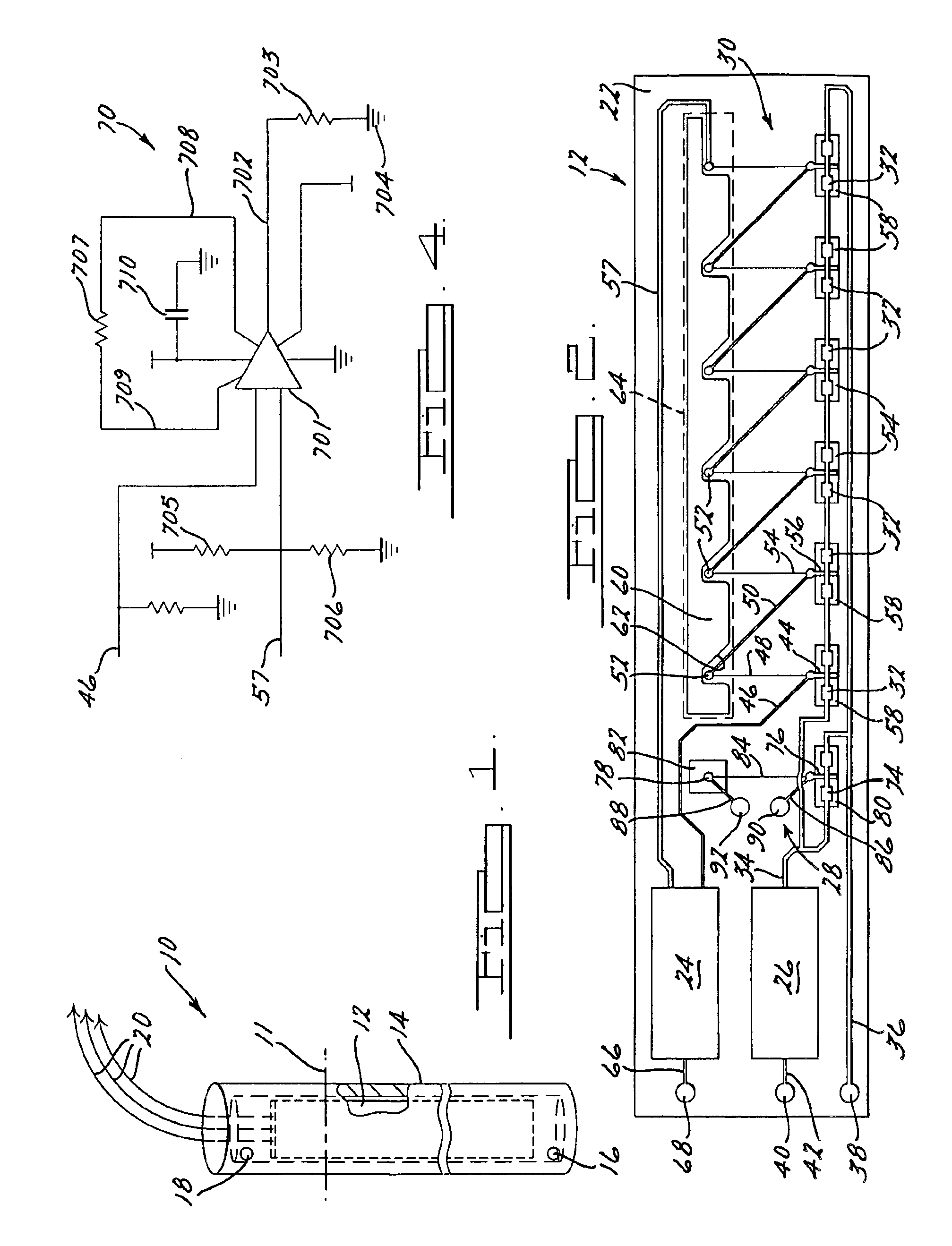Liquid level sensor
a level sensor and liquid level technology, applied in the direction of volume metering, machines/engines, instruments, etc., can solve the problems of low manufacturing efficiency, low reliability, and low manufacturing efficiency of the circuitry required to generate the level indicating signal, etc., to achieve simple and reliable devices, low manufacturing cost, and simple design
- Summary
- Abstract
- Description
- Claims
- Application Information
AI Technical Summary
Benefits of technology
Problems solved by technology
Method used
Image
Examples
first embodiment
In a first embodiment shown in FIGS. 11 and 12, the STLS 201 includes a printed circuit board 200 having a relatively rigid substrate 202 upon which a power supply circuitry 204 and a liquid level sensing assembly 206 are supported on the front and back sides, respectively, of the substrate 202. Substrate 202 may be fabricated from a variety of different materials but will preferably be made from a suitiable printed circuit board material having good electrical insulating properties and preferably resistant to degradation from the environment in which it will be utilized. It is also preferable that the material be relatively thin to promote heat transfer through the substrate from one surface to the other, and to promote a faster response time.
The liquid level sensing assembly 206 includes a pair of substantially identical heating resistors 208, 209. The resistors 208, 209 are positioned in spaced relationship on opposite sides of the substrate 202, and disposed at the distal end of...
second embodiment
Referring to FIGS. 13 and 14, the single threshold level sensor (STLS) is provided and includes a printed circuit board 200a having a relatively rigid substrate 202a upon which a power supply circuitry 204a and a liquid level sensing assembly 206a are supported. In view of the substantial similarity in structure and function of the components associated with the STLS 201 with respect to the STLS 201a, like reference numerals are used hereinafter and in the drawings to identify like components, while like reference numerals containing letter extensions are used to identify those components that have been modified.
The liquid level sensing assembly 206a includes a pair of substantially identical heating resistors 208a, 209a that are positioned in spaced relationship on opposite sides of the substrate 202a, as best shown in FIGS. 13 and 14. The resistors 208a, 209a are connected in parallel through electrically conductive perforations 213a and 215a in the substrate 202a. Power is suppli...
PUM
 Login to View More
Login to View More Abstract
Description
Claims
Application Information
 Login to View More
Login to View More - R&D
- Intellectual Property
- Life Sciences
- Materials
- Tech Scout
- Unparalleled Data Quality
- Higher Quality Content
- 60% Fewer Hallucinations
Browse by: Latest US Patents, China's latest patents, Technical Efficacy Thesaurus, Application Domain, Technology Topic, Popular Technical Reports.
© 2025 PatSnap. All rights reserved.Legal|Privacy policy|Modern Slavery Act Transparency Statement|Sitemap|About US| Contact US: help@patsnap.com



